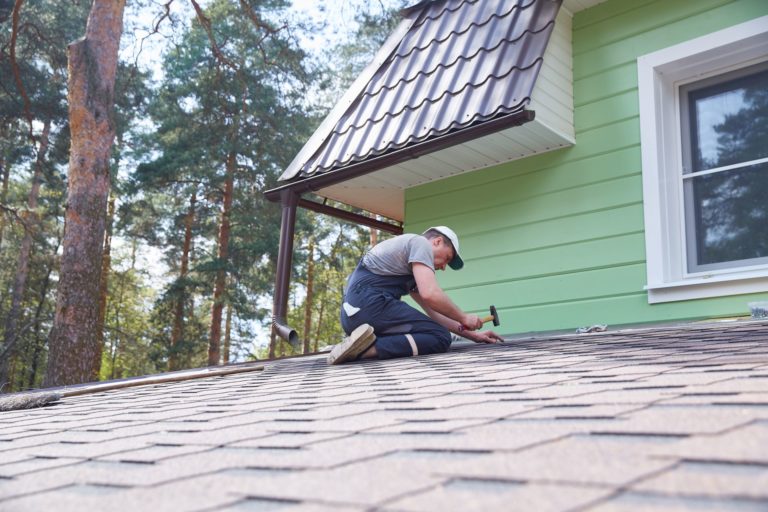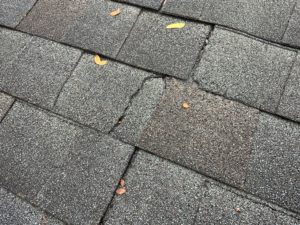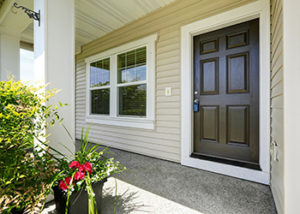Keeping your asphalt shingle roof in good shape is essential for protecting your home from the elements. Many homeowners worry about roof problems, from minor shingle damage to issues that require a complete roof replacement. Understanding these common problems and knowing how to address them can save you a lot of stress and money.
Fixing minor shingle damage yourself can be straightforward if you know what to look for and how to make the repairs. Things like cracked, curled, or missing shingles might seem like small issues, but they can lead to bigger problems if not addressed promptly. Being able to identify these signs helps you tackle repairs before they become more serious.
On the other hand, knowing when to replace your shingles or even the entire roof is just as important. Old or extensively damaged shingles can compromise your home’s protection. Regular maintenance and preventative measures can go a long way in extending the life of your roof, keeping it looking great and functioning well for many years. In this article, we’ll cover these topics to help you keep your asphalt shingle roof in top condition, whether you’re dealing with new issues or preventing future ones.
Identifying Common Asphalt Shingle Problems
Asphalt shingles can show many signs of wear and tear over time. Identifying these issues early can help prevent more serious damage to your roof and home. Some common asphalt shingle problems include cracking, curling, and granule loss.
Cracked shingles can happen due to weather exposure, aging, or impact from debris. These cracks allow water to seep into your roof, leading to leaks and other damage. If you see multiple cracked shingles, it might be time to consider repairs or replacements.
Curling shingles are another sign of trouble. Shingles can curl at the edges due to moisture or poor ventilation in your attic. When shingles curl, they lose their ability to protect your roof effectively, making it easier for water to enter your home.
Granule loss is a common issue with asphalt shingles. These tiny granules protect the shingles from the sun’s harmful rays. If you notice granules collecting in your gutters or downspouts, it means your shingles are wearing out. This can leave your roof vulnerable to sun damage and reduce its lifespan.
DIY Fixes for Minor Shingle Damage
Fixing minor shingle damage yourself can be simple and cost-effective. Here are some DIY tips to help you handle minor asphalt shingle repairs:
1. Replacing Missing Shingles: If you notice any shingles missing, replace them right away to prevent leaks. Carefully lift the surrounding shingles and remove the damaged one. Slide the new shingle into place and secure it with roofing nails.
2. Sealing Cracks: For small cracks in shingles, you can use roofing sealant. Apply the sealant to the crack and smooth it with a putty knife. This will help protect your roof from water damage until a more permanent fix can be made.
3. Fixing Curled Shingles: Use a good amount of roofing cement to fix curled shingles. Apply the cement under the curling edge and press the shingle down firmly. You can use a brick or a similar heavy object to hold it in place while the cement dries.
4. Replacing Granules: If you notice granule loss, you might be able to replace them. Spread roofing cement over the bald spot and press replacement granules into the cement.
Always remember to be safe when working on your roof. Use a sturdy ladder and consider having someone help you. For more extensive repairs, it’s often best to hire a professional to ensure the job is done correctly. Taking care of minor shingle issues promptly can keep your roof in good condition and extend its life.
When to Replace Shingles
Knowing when to replace your shingles can save you a lot of hassle and prevent major damage to your home. There are several key signs that indicate it might be time for a roof replacement. Pay close attention to your roof’s age, extensive damage, and recurring problems that simple fixes can’t solve.
If your roof is over 20 years old, it might be time to consider a replacement. Asphalt shingles generally last 20-30 years, but weather conditions and maintenance can affect their lifespan. An old roof that’s nearing the end of its expected life is more prone to issues and may not protect your home effectively.
Extensive damage, such as large areas of missing, cracked, or curled shingles, is another clear sign that replacement is needed. When many shingles are damaged, spot repairs might not be enough. Extensive damage can lead to deeper problems like leaks and structural damage, which can be costly to fix if not addressed promptly.
Recurring problems are also a red flag. If you find yourself frequently repairing the same issues, it might be more cost-effective to replace the shingles or even the entire roof. Constant repairs can add up quickly, and a new roof might be a better investment in the long run.
Preventative Maintenance Tips
Preventative maintenance helps extend the life of your asphalt shingle roof. Regular care and simple checks can keep your roof in top shape and prevent minor issues from becoming big problems. Here are some tips to help maintain your roof:
1. Regular Inspections: Check your roof at least twice a year, in the spring and fall, to spot any potential issues. Look for damaged, loose, or missing shingles, and check for signs of wear around chimneys, vents, and skylights.
2. Clean Gutters: Keep your gutters clean and clear of debris. Clogged gutters can cause water to back up and seep under your shingles, leading to leaks and water damage.
3. Trim Overhanging Branches: Trees with branches that hang over your roof can cause damage in several ways. They can scrape the shingles, drop leaves that trap moisture, and even fall during storms. Regularly trim back branches to protect your roof.
4. Remove Moss and Algae: Moss and algae can grow on your roof, especially in damp or shaded areas. These can cause damage by holding moisture against the shingles. Use a moss and algae cleaner to remove any growth and prevent future build-up.
5. Check Attic Ventilation: Proper attic ventilation is crucial for the health of your roof. Make sure your attic is well-ventilated to prevent moisture build-up, which can lead to mold and damage to your shingles.
Taking these preventative steps can help you avoid many common roof problems and keep your asphalt shingle roof in good condition for years to come.
Conclusion
Keeping your asphalt shingle roof in good shape involves more than just fixing problems as they arise. By understanding how to identify common issues, making minor repairs, knowing when to replace shingles, and following preventative maintenance tips, you can extend the life of your roof and protect your home.
Don’t put off necessary repairs or replacements, as this can lead to more serious and costly damage. If you notice any of the warning signs or if your roof is old and worn out, it’s time to take action. Lighthouse Exteriors is here to help you with expert advice and professional roofing services. Contact us today to ensure your roof is in the best possible condition. Let us help you keep your home safe and sound!







